5.8 SURREALISM
DADA AND SURREALISM
The term Surrealism was used by the French critic and playwright Guillaume Apollinaire to describe the works of De Chirico and Marc Chagall, but the Surrealist Manifesto was not issued until 1924. So what is a manifesto? A manifesto was a way to revolt against the established art world.
The definition of surrealism is as follows: it is a noun, and is pure automatism by which it is intended to express, either verbally or in writing, the true function of thought. Thought dictated in the absence of all control exerted by reason, and outside all aesthetic or moral preoccupations.
Surrealism is based on the belief in the superior reality of certain forms of association that had been neglected, in the omnipotence of the dream, and in the disinterested play of thought. It leads to the permanent destruction of all other psychic mechanisms and to its substitutions for them in the solution of the principle problems of life.
It is a pictorial art, inspired by the writings of Freud which said that the human mind conceals things in its depths. Surrealists wanted to create a vision of reality that also included the truths harbored in the unconscious. They included dream imagery, fantasies, and hallucinations in a direct fashion that made their paintings startling.
It is the presentation in meticulous detail, recognizable scenes and objects which are taken out of context, distorted and recombined in fantastic ways as they might be in dreams.
Since progress and progression had ended in meaningless war, it was the aesthetic of the non- rational because of man’s inhumanity to man which had occurred during the war.
They believed they must develop non-rational thought to deal with the world, since rational thought had not worked.
They concentrated on accident, shock value, the breakdown of inhibitions, and the need for revolt against the traditional, the standard, or the accepted.
The surrealist state is when you take the illogic of the dream and resolve it into a new reality by juxtaposing images that do not go together.
They were very left politically and often used Marxist ideas.


Dada and proto-surrealism were important influences on the surrealistic movement. Dadaism was founded in Zurich, Switzerland by a group of young men who had no desire to fight in World War I. Instead they concentrated on fun, games, poetry, demonstrations, noise concerts, and anything to attack tradition. They sought the destruction of the rules, order and coherency. They sought intuitive and simultaneous chance. Zurich Dada was tied closely to literature. For instance their music was called brutalism, noise music, and the instruments might be flushing toilets. Poetry reading might include long recitations of nonsense syllables.
Dada was a nihilistic, anti-art movement which wanted to dump the inheritance of the past and enable artists to make a new start. Dadaists were in open rebellion against middle class society which, in their eyes, had precipitated a bloody war, caused massive unemployment, and fostered unrest and political chaos. By denying all allegiances to the past, Dadaists hoped to inspire a new future. The value of their art was concerned more with the making of it than the end result. It made no attempt to explain its environment; it only sought to break from the shackles of the past.
Marcel Duchamp (1887-1968)
Paris of 1911 was a central meeting place for artists. Duchamp looked at and tried many of the new types of art, but he was disillusioned and was especially unhappy with the track taken by the cubists. So in 1915 he went to New York. He had not painted for fifteen years and was at the end of his painting career. He began working with what he called “readymades”, things that were made for another reason and repurposed by an artist for their own creations. One of Duchamp’s most important works is Fountain, a ceramic urinal which he laid on its side, making the drains totally useless. He then signed and dated it with a fictitious name ‘R. Mutt’, and entered it to the Society of Independent Artists show. Granted, the Society allowed artists to submit new, experimental art, but this was really farfetched.
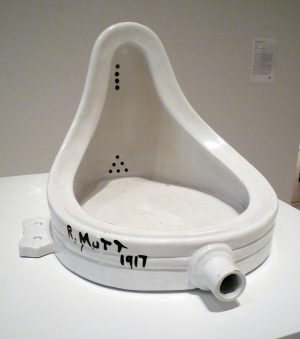
At first they rejected it. Duchamp believed that there were many beautiful objects that could be considered art, even though they were commonplace items. He forced the art world to answer the questions: What is art and who decides what is art and what is not? Duchamp created many other “works of art” using objects he thought were beautiful.
Duchamp, Fountain 3:11, Duchamp, 3 Standard Stoppages 2:28 If you receive an error with the links above, use the following links https://www.khanacademy.org/humanities/art-1010/dada-and-surrealism/dada2/v/marcel-duchamp-fountain-1917?modal=1, https://www.khanacademy.org/humanities/art-1010/dada-and-surrealism/dada2/v/duchamp-3-standard-stoppages?modal=1

When Duchamp moved to New York he brought with him Nude Descending a Staircase (no.2). The New York art critics did not like it, partly because it was so different, and they were not up to date on the type of art being created in Europe. See figure 5.81 in the upper right corner of the art in a suitcase to see a small version of the work. It depicts a person, neither male nor female, walking down stairs. As in earlier cubist works this shows multiple versions of the person, all at the same time, as if the body is leaving versions of itself along the steps of the stairs. The monochromatic palette is used so as not to distract the viewer from the geometric faceting and the analysis of the object, which has disappeared. We barely recognize the form as human.
Bride Stripped Bare by Her Bachelors was supposed to be exhibited with a catalog which would explain each part of the work. However, Duchamp did not want it to be taken too seriously or they might miss its rich comic spirit. It is supposed to represent a machine with male forms and female forms, a chocolate grinder, and a water wheel driven by an imaginary waterfall. After a year of exhibition it was cleaned and moved, and broken in transit. Duchamp is supposed to have said, “Now it is complete.”
Bride Stripped Bare by Her Bachelors, Even (The Large Glass) 7:28
If you receive an error with the link above, use the following link https://smarthistory.org/duchamp-largeglass/
Meret Oppenheim, Object (Fur-covered cup, saucer, and spoon 3:20
If you receive an error with the link above, use the following link https://www.khanacademy.org/humanities/art-1010/dada-and-surrealism/xdc974a79:surrealism/v/meret-oppenheim-object-fur-covered-cup-saucer-and-spoon
If you receive an error with the link above, use the following link https://www.khanacademy.org/humanities/art-1010/dada-and-surrealism/dada2/v/hannah-h-ch-cut-with-the-kitchen-knife-1919-20?modal=1
Hausmann, Spirit of the Age: Mechanical Head 4:59
If you receive an error with the link above, use the following link https://www.khanacademy.org/humanities/art-1010/dada-and-surrealism/dada2/v/hannah-h-ch-cut-with-the-kitchen-knife-1919-20?modal=1
Magritte, The Treachery of Images, (This is not a pipe) 3:41
If you receive an error with the link above, use the following link https://www.khanacademy.org/humanities/art-1010/dada-and-surrealism/xdc974a79:surrealism/v/magritte-the-treachery-of-images-ceci-n-est-pas-une-pipe-1929
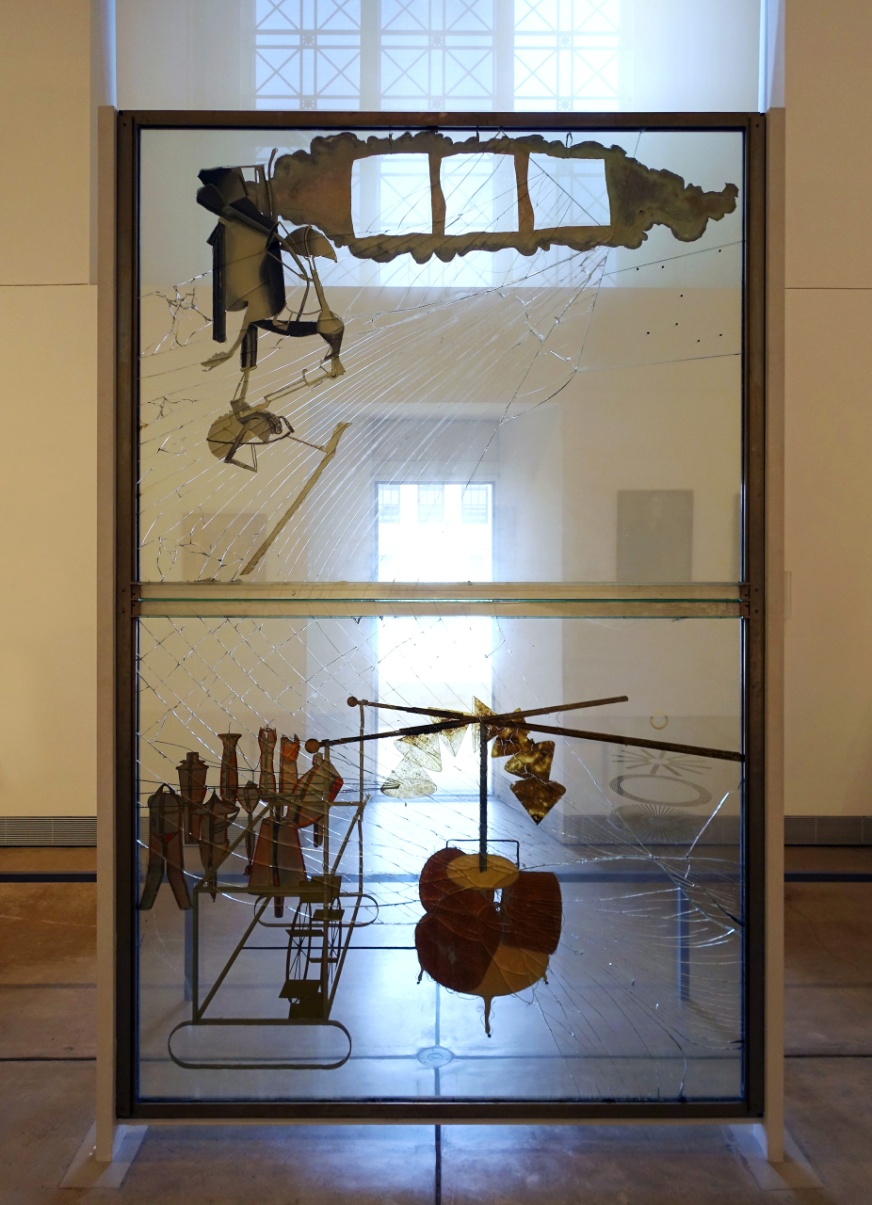
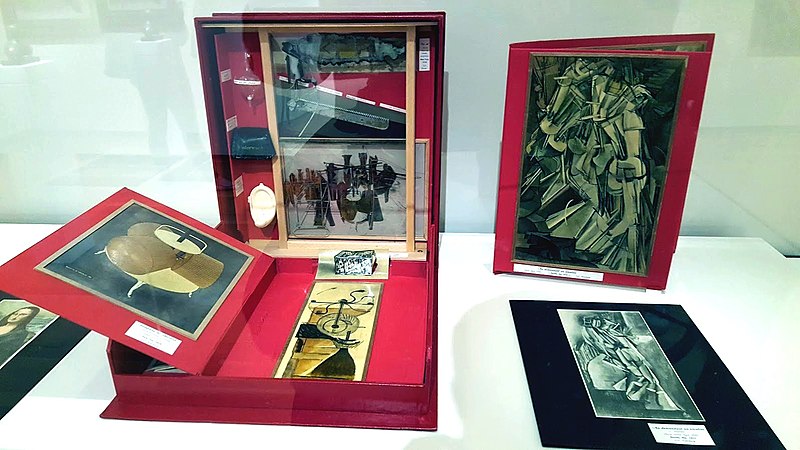
The Museum in a Box was an assemblage of the art work of Duchamp. It was a group of reproductions of his work that was kept in a valise or a box. There were several versions of it made between 1935 and 1966. They were intended to be a portable museum and included photographs, lithographs, replicas of small objects such as Fountain, and in some versions he included an original art work in the box.
Museum in a Box 4:59
Select this link if you cannot view the video above https://smarthistory.org/marcel-duchamp-boite-en-valise/
Duchampe, Boite-en-valise (the red box), series F 5:00
Select this link if you cannot view the video above https://www.khanacademy.org/humanities/art-1010/dada-and-surrealism/dada2/v/marcel-duchamp-boite-en-valise-the-red-box-series-f-1960?modal=1
In Advance of the Broken Arm by Duchamp 10:07
Select this link if you cannot view the video above https://www.khanacademy.org/humanities/art-1010/dada-and-surrealism/dada2/v/duchamp-s-shovel-art-as-concept?modal=1
Marc Chagall
The early works of Marc Chagall (1889-1985) are considered Proto-Surrealism. He was born in Lionza, near Vitebsk in Belarus which was then part of Russia. Marc was the oldest of nine in a poor, Jewish family. From his background he acquired a repertoire of Russian-Jewish folk tales and a deep attachment to the Jewish religion and traditions. This included an aversion to depicting any living thing that could have been created by God. So he grew up in a home without pictures on the wall and his desire to become an artist was not welcomed by his family. Since he was Jewish, he was not allowed to attend regular schools or universities. He learned to draw by himself and attended various art schools in St. Petersburg where he retouched photographs, painted signs, and worked in the theater designing stage sets and costumes. In 1910 he moved to Paris, but he was extremely poor so he took a job in an art studio and visited galleries and museums such as the Louvre to learn from artists of the past.
Chagall’s exposure to the art of Paris caused him to try Fauvist color, Cubist space, and lyric fantasy. We would not call him a cubist or a fauvist, but his work can be considered a precursor to the surrealist art that came later. He is known to have created more than 10,000 works of art, most of which depicted the dreams and stories that were going on inside his head. His stories of his home, his family, and the peasant life he lived in dominated his work, but he also integrated religious stories and ideas from his Jewish background. The art critics had difficulty understanding his work, but the public saw some of their story in his.
He returned to Vitebsk in 1914 and was unable to leave due to the hostilities of WWI. While there he married Bella Rosenfeld and had a daughter. At the end of the war the family went to Paris where Chagall was given the assignment to illustrate a Bible for Ambroise Vollard, an art dealer. By 1941 Chagall took his family to New York City to escape the persecution of the Jews. Not long after his wife died suddenly leaving him grief stricken. During his years in America he built sets for the ballet, murals for the Lincoln Center, and stained glass windows for the United Nations headquarters in New York and for the Art Institute in Chicago. He is also known for his lithographs, etchings, sculptures, mosaics and tapestries.
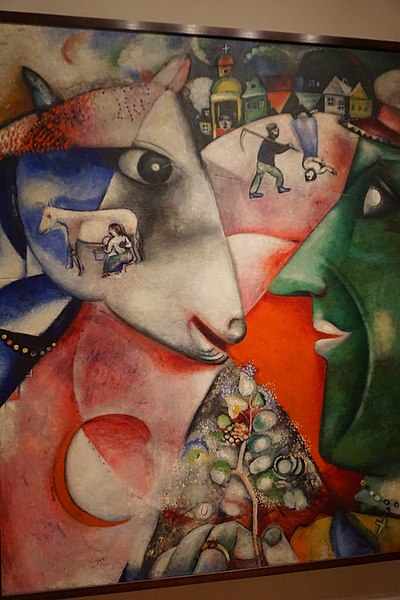
Chagall let his friend, the poet Blaise Cendrars choose the names of his paintings. This work is based on the life as it might have been in his home village. There is an up thrust of energy in the bottom center of the painting which might be the tree of life from the Garden of Eden. Spinning around it are pink circles of bright, incongruous scenes, figures and shapes. We see a green Russian head, a white cow’s head with beads around the neck, the houses and churches of Vitebsk, an upside down woman and a man with a scythe which may or may not be the Grim Reaper. A milkmaid is milking a goat, and the sun and moon swirl behind some of the main objects. Chagall drew a line from the eye of the cow to the eye of the person, connecting them. He is using cubist facets, but they now seem to tell a story, even though we don’t know the storyline and cannot put the facts together. It is his dream, his past reality, or his imagination, and we don’t need to understand.


This dome of the Garnier Opera House in Paris was repainted by Chagall in 1963 and 64. It is much different than the art work in the rest of the building. His dome is covered with views of the Eiffel tower, ballet dancers, and angels flying through the air, and flying lovers. It almost seems out of place in the ornate, gold covered walls.10
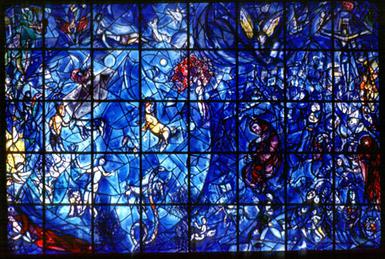
The memorial window at the United Nations complex contains several symbols of peace and love, such as the young child in the center being kissed by an angelic face which emerges from a mass of flowers. On the left, below and above, motherhood and the people who are struggling for peace are depicted. Musical symbols in the panel evoke thoughts of Beethoven’s Ninth Symphony, which was a favorite of Mr. Hammarskjöld’s. Chagall’s own handwritten dedication (15 May 1963) reads: “To all who served the Purposes and Principles of the United Nations Charter, for which Dag Hammarskjöld gave his life.”12
Giorgio de Chirico
Giuseppe Maria Alberto Giorgio de Chirico (1888-1978) was a painter and writer born in Greece of Italian parents. In 1917 he founded the short lived scuola metafisica. His purpose was to make real and comprehensible the improbable or fantastic, by juxtaposing it with normal everyday experiences and objects. De Chirico constantly referred to the metaphysical content of his painting to cover the various effects of strangeness, surprise, and shock. His works were so different from the works of other artists of the time that he became a major influence in the development of the surrealist movement. He was considered to be a very strange person who was often sad, lonely, and morbidly sensitive.

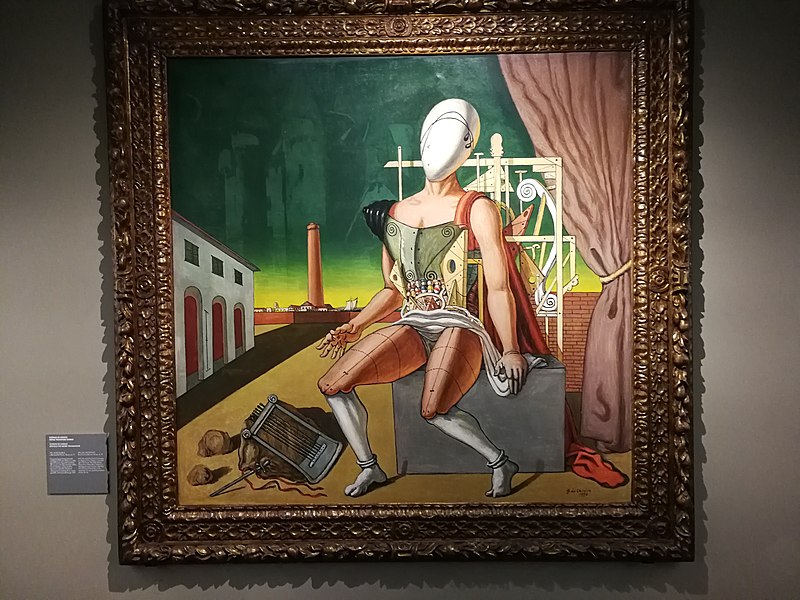
Many of De Chirico’s works show faces without eyes. This may be due to his desire to focus on the inner vision, not trusting what he actually sees. He may have intended some reference to Tiresias, the blind seer of Greek plays who, although he was blind, was able to understand more than others what was happening and what should be done. Sometimes the objects in his paintings or sculptures do not seem to belong together, are out of place, or have no apparent logic. Many times the sky in his work is menacing and threatening. There are shadows placed next to brilliant sunlit areas. The objects may look normal when viewed separately, but when viewed as a whole, they make no sense.
Giorgio De Chirico, The Anxious Journey 2:39If you receive an error with the link above, use the following link https://www.khanacademy.org/humanities/art-1010/dada-and-surrealism/xdc974a79:surrealism/v/moma-dechirico-anxiousjourney
From the beginning Surrealism diverged into two major styles. De Chirico, Yves Tanguy Rene Magritte and De Chirico used recognizable objects that were distorted, dismembered and reassembled in unrelated sequences. A second style of Surrealism was developed by Joan Miro and others who used automatism, accident, biomorphic figures in abstract or barely recognizable creations. Many artists vacillated between the two styles and some artists created a Surrealistic style of their own. Surrealistic artists developed works on canvas, sculpted, and became proficient in printmaking.
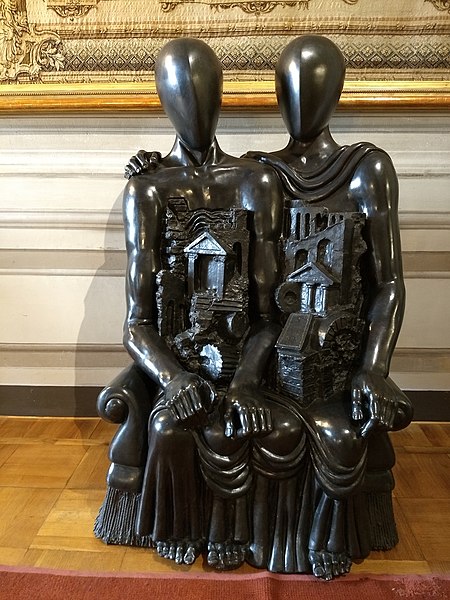
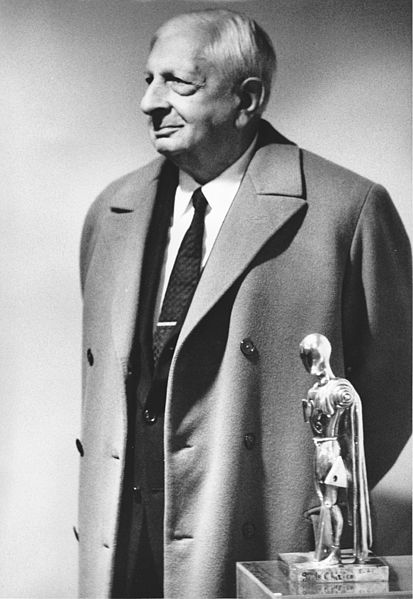
Salvador Dali
Salvador Dali, (Salvador Domingo Felipe Jacinto Dali I Domenech, Marquess of Dali of Pubol) (1904-1989) was born near Barcelona, Spain, and was named Salvador, the same name that had been given to his brother who was born several years before him and died as a toddler. Dali’s parents told him that he was the reincarnation of his dead brother and this tormented him all his life. He followed the normal academic training for an artist and was influenced by Impressionism, Pointillism, Futurism and the writings of Freud. Dali began to paint a dream world more real than what he observed in nature using elements of dreams, visions, and psychological and pathological distortions. He developed a precise drawing technique and an ability to use discordant but luminous color combinations. He used real objects as the taking off point for his work, and declared his primary images to be blood and decay. Under his hand the commonplace object gradually transformed into a nightmare image. He wanted to create in his art a specific documentation of Freudian theories applied to his own inner world. He was also interested in the sciences, especially the theories of time and space expressed by Einstein. He lived in France from 1936 to 1939 during the Spanish Civil war, and some of the blood and horror of his work from that time was likely based on the things he saw during the conflict in Spain.

His most important work is The Persistence of Memory, painted in 1931. It has nothing to do with the abstractions of the twentieth century. In fact he reached back to the 15th century Flemish miniatures for his ideas. His space is infinite, hard and objective. We expect the watches he portrays to be hard, but they are pliable, melted and non-functioning. They are draped over other objects, including what could be the form of a sleeping man. This is a scene of empty space where time is at an end. The landscape is barren, without a horizon, and drifts to eternity. Since this is a dream, it depicts time in dreams as flexible. Please watch these two short videos to learn more about the Persistence of Memory, the artist and his works.
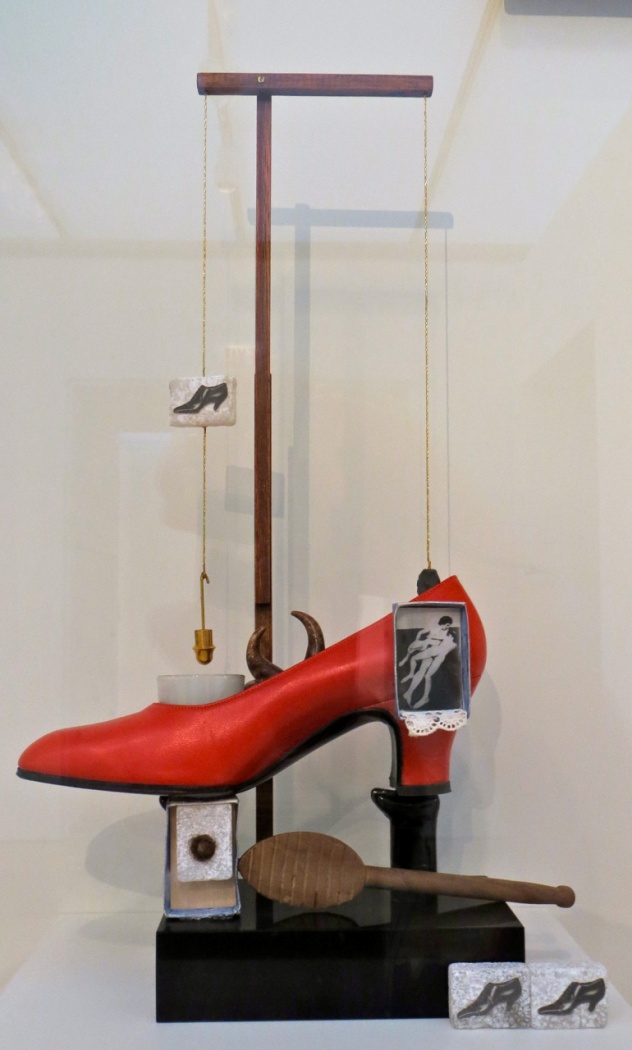
Dali’s fame is based on his early works from 1929-39. His technique made almost any vision seem real, but his landscapes are illusions and one does not feel like walking into them. His work is runny Camembert cheese, soft watches, fried eggs and morbid flesh. His art is often pessimistic. This work is an ambiguous dream landscape; flat, desert-like plane, clear lines; deep perspective; dark shadows; porcelain-like surfaces, clear lines and a lack of reference to a specific time.
In 1940 Dali escaped from France and came to the United States, where he began promoting his work. He was a painter, a graphic artist, a photographer, and a contributor to film, including the work of Walt Disney in the creation of Destino, a short film begun by Dali in 1957 and released by Disney in 2003. Dali created 22 paintings, more than 133 storyboards, drawing and sketches for the film. Disney’s studio then generated about 20 seconds of original animation based on Dali’s artwork.”19 In 1945 he also worked with Alfred Hitchcock to create the dream sequence in Spellbound, with Gregory Peck and Ingrid Bergman and the study of psychoanalysis, which was why Dali was invited to participate. He wrote fiction, poetry, essays and an autobiography. He was a shameless self promoter, and was accused of outrageous public behavior that often took attention from his art. He also made commercials for Braniff Airlines, Datsun, Chocolat, Lanvin and Alka Seltzer. Dali did not die until 1989 and he was a self promoter as much as he was an artist.
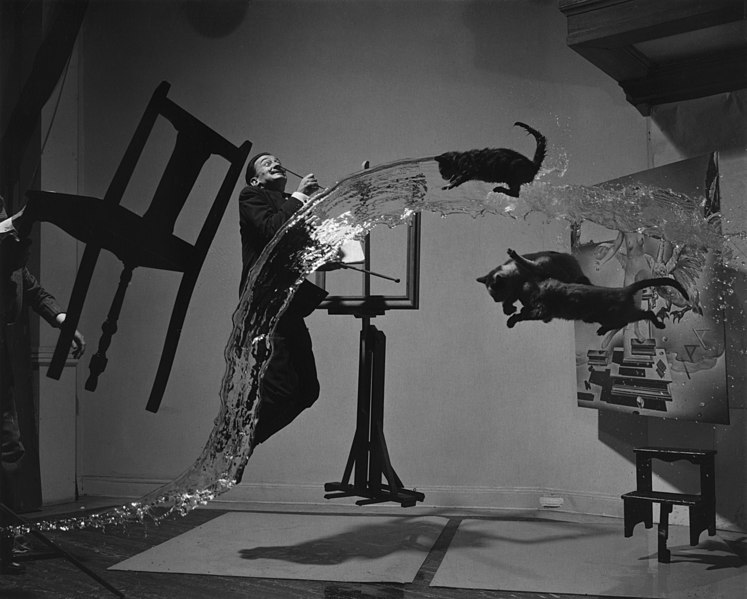
This is a photograph of Dali, three cats, buckets of water and a chair being thrown. Dali’s Leda Atomica is on the easel at the right. It took twenty eight attempts to get this image. Dali’s paintings and drawings are still under copyright, but many of his sculptures are in public places so photographs can be taken of them. Following you can see two of Dali’s sculptures.
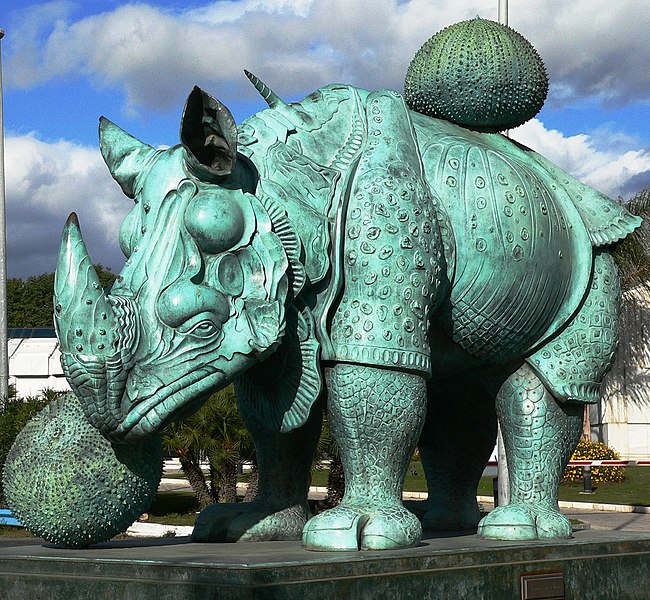
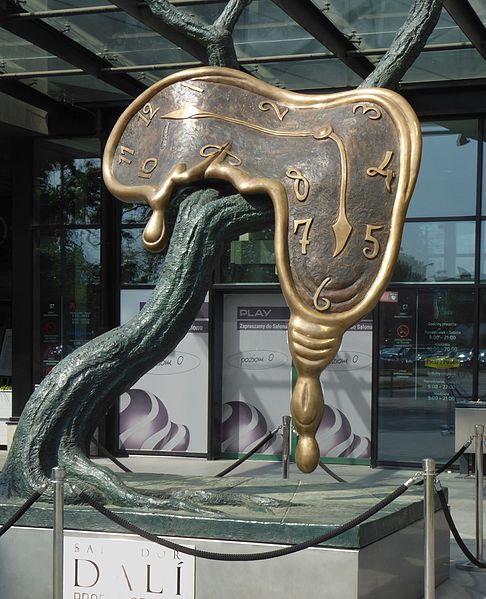
Joan Miro
Joan Miro I Ferra was born in Barcelona, Spain. (1893-1983). His father was a silversmith and a watchmaker and his mother was the daughter of a cabinet maker. He studied business but by 1912 he decided to focus on art rather than business and learned some of his first lessons from the work of Vincent van Gogh and Paul Cezanne. In 1926 Miro worked on costumes and sets for the ballet Romeo and Juliet in Paris.
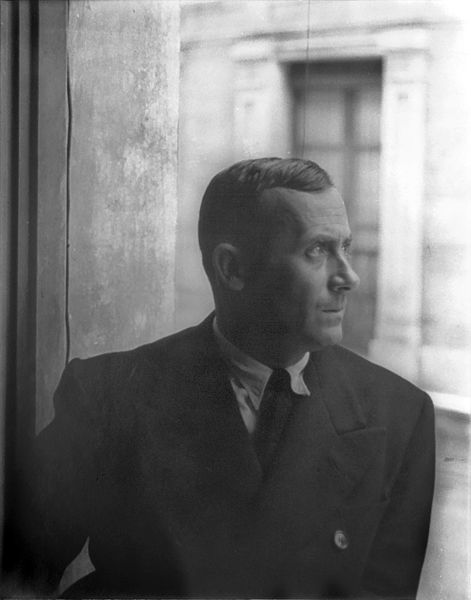
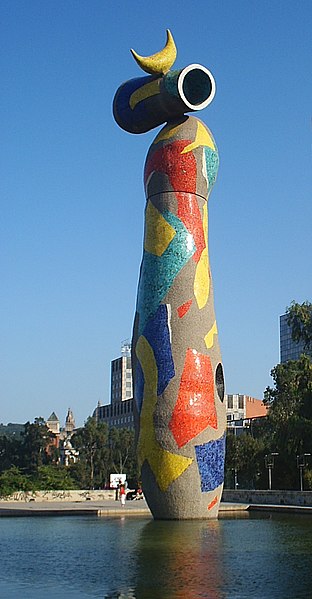
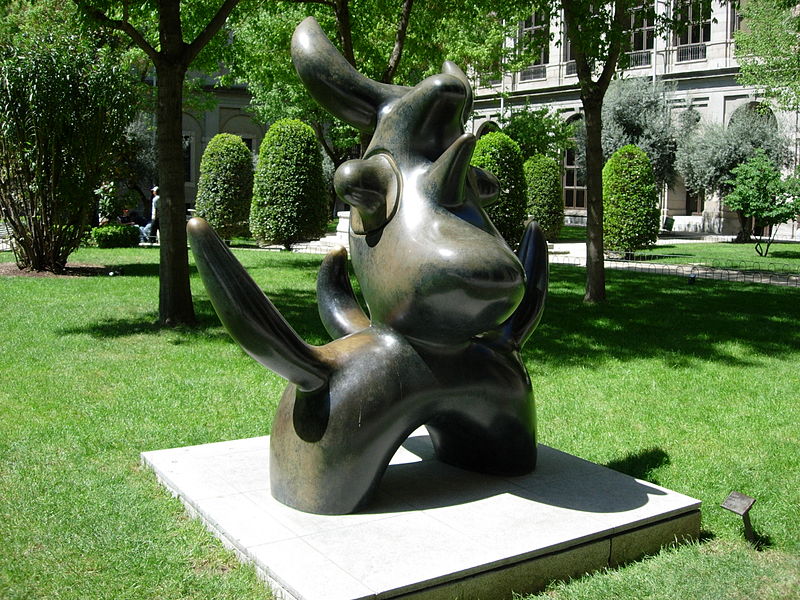
Miro’s Surrealism led down the path of automatism, abstraction and improvisation. By letting his brush draw loosely on the surface of the canvas, Miro learned that he could soon discover forms which, with a few added lines and touches of color, would soon become incarnations of his inner, hidden thoughts. In a sense Miro was closer to the written ideal of surrealistic art than many others in the movement because of his attempts to translate from the subconscious to the canvas. Miro was unhappy with the road taken by surrealism in 1929, but unlike others who broke with the group, he remained on good terms with its founder, Andre Breton and quietly did his own thing.
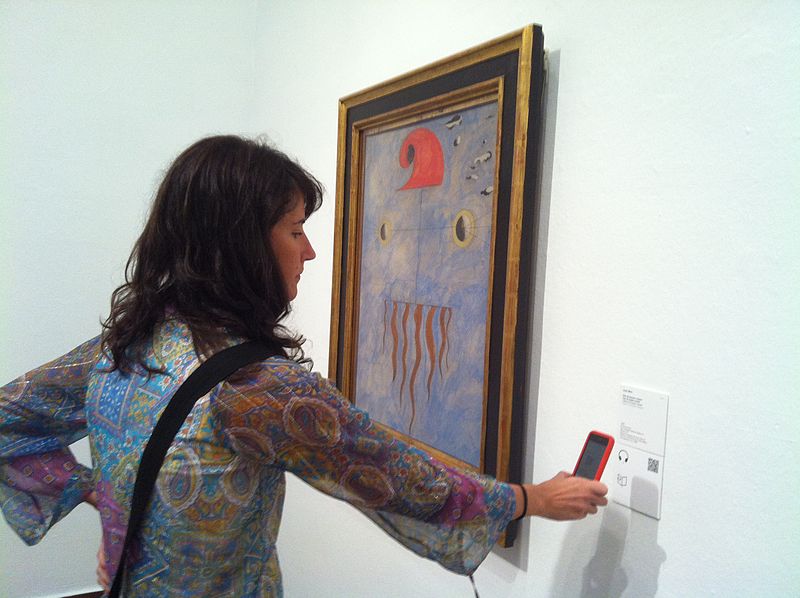
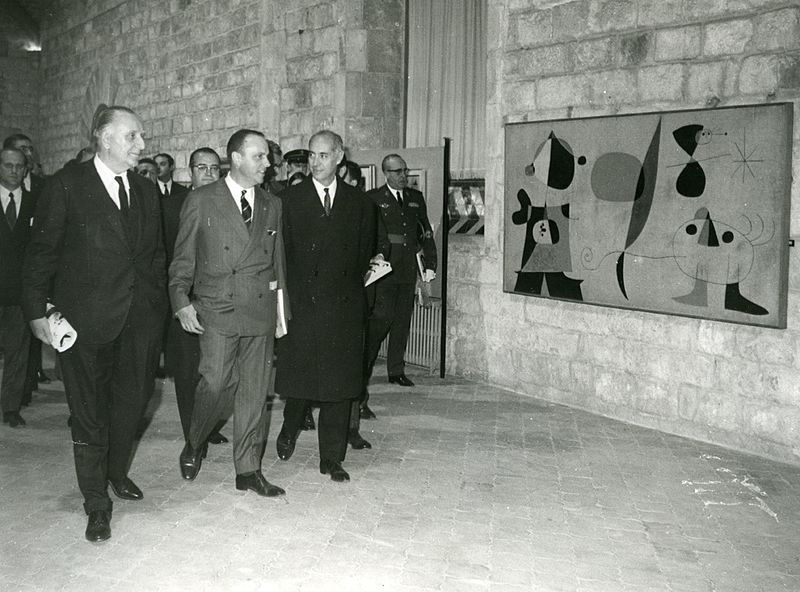
Alexander Calder
Alexander Calder (1898-1976) was born in Pennsylvania and came from a family of artisans. His grandfather made the sculpture of William Penn that is now on the tower of the Philadelphia City Hall, his mother painted portraits, and his father created many public installations in Philadelphia. Alexander studied at the Germantown Academy and the Art Students League with John Sloan, George Luks, and Boardman Robinson. Alexander spent some time in Paris where he met his future wife Louisa James and became acquainted with Fernand Léger, Jean Arp and Marcel Duchamp while studying at the Academie de la Grande Chaumière. Calder’s most famous works are his kinetic sculptures that move either in the wind or by the touch of a human hand. The accidental movement is what places him in the category with the work of Miro and Duchamp. Later in his life he also built “stabiles” like La Grande Vitesse in figure 5.101, that did not move.
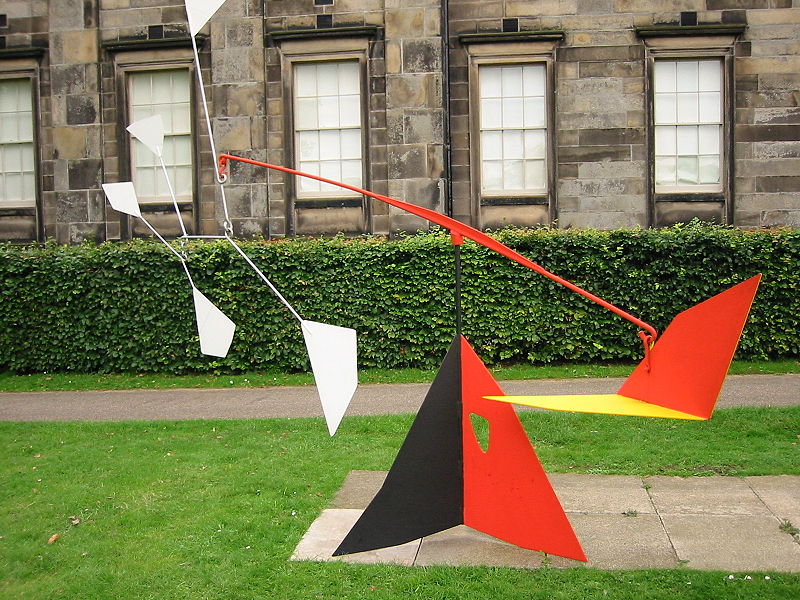
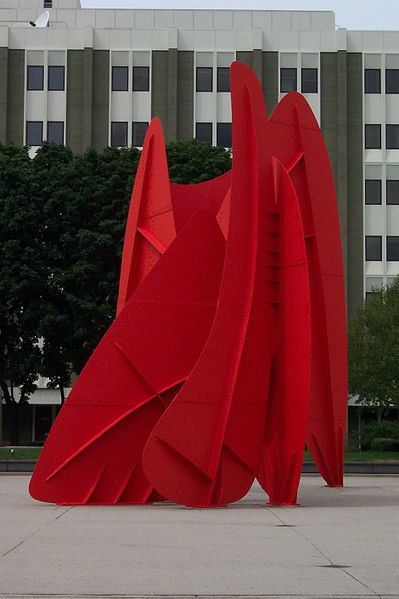
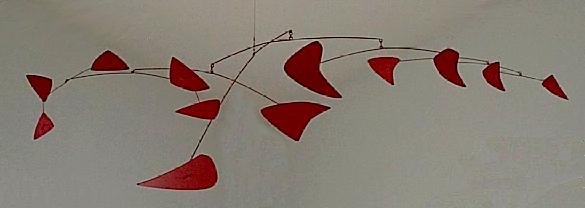
Frida Kahlo
Frida Kahlo (1907-1954) was a Mexican painter married to Diego Rivera. Over time her reputation increased and she has become important in her own right. She is best known for her highly distinctive self-portraits showing her in a wide range of circumstances and settings. She said she painted self-portraits because she was alone so often. She endured much suffering in her life. First she contracted polio at age six and it left her with a withered right leg. Then she was in a bus and trolley collision at age eighteen. Her pelvis and spinal column were broken and her foot crushed. This caused her to have a life-long series of operations. She used the details of her life as symbols of the psychological pain of human existence.
Kahlo began painting as a young girl while she convalesced from her injuries. Her life became a heroic and tumultuous battle for survival against illness and stormy personal relationships. She and Diego divorced in 1939 and then remarried a year later. Their married life was fraught with infidelity on both sides and they had a difficult relationship. Many of Frida’s works depict her awareness of her mixed racial heritage, since her father was German and her mother was Mexican. Frida often portrayed herself dressed in a traditional indigenous tehuana or in European dress.




Frida did not attend an art school and did not have a studio. It could be said that she was self taught. Her self-portrait on the Borderline Between Mexico and the United States shows a pre-Columbian ruin on the left and the smokestacks of the industrialized cities in the United States on the right. Here is another example of her belief that she straddled two worlds. As Kahlo’s reputation increased, her health declined. She had multiple miscarriages and was not able to have a child. Doctors attempted surgery to support her injured spine but it was not successful. In 1953 her first solo exhibition occurred in Mexico and her doctors said she was not well enough to attend. She moved her bed to the gallery, arrived at the show in an ambulance, and spend opening night in bed as ordered.35 Kahlo’s life was filled with pain and the depression that accompanied it. She died at the young age of 47. Some say she died of pulmonary embolism while others say she overdosed on the medication provided for her pain.
Kahlo’s reputation grew exponentially after her death and she is now well known for her Surrealistic self portraits and for her life of struggle. The United States issued a postage stamp in her honor. She is included in the Legacy Walk in Chicago that celebrates LGBT history and people. Her work and her life have become much publicized since her death, and Mexico now recognizes her as a national treasure and does not allow her work to be exported.

